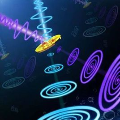Certain types of quantum computing platforms, such as those realized using Rydberg atoms or Kerr-cat qubits, are natively more susceptible to Pauli-Z noise than Pauli-X noise, or vice versa. On such hardware, it is useful to ensure that computations use only gates that maintain the Z-bias (or X-bias) in the noise. This is so that quantum error-correcting codes tailored for biased-noise models can be used to provide fault-tolerance on these platforms. In this paper, we follow up on the recent work of Fellous-Asiani et al. (npj Quantum Inf., 2025) in studying the structure and properties of bias-preserving gates. Our main contributions are threefold: (1) We give a novel characterization of Z-bias-preserving gates based on their decomposition as a linear combination of Pauli operators. (2) We show that any Z-bias-preserving gate can be approximated arbitrarily well using only gates from the set {X,R_z(\theta),CNOT,CCNOT}, where \theta is any irrational multiple of 2\pi. (3) We prove, by drawing a connection with coherence resource theory, that any Z-bias-preserving logical operator acting on the logical qubits of a Calderbank-Shor-Steane (CSS) code can be realized by applying Z-bias-preserving gates on the physical qubits. Along the way, we also demonstrate that Z-bias-preserving gates are far from being universal for quantum computation.
翻译:暂无翻译



